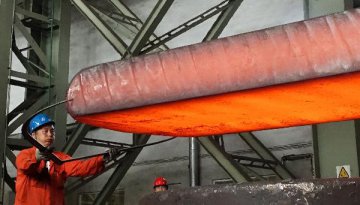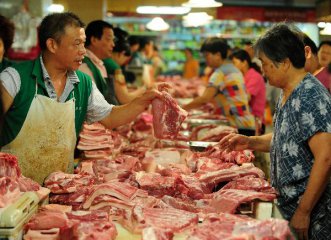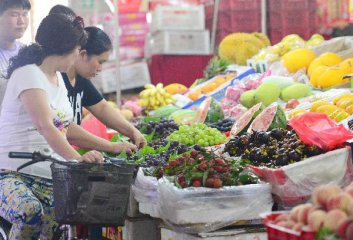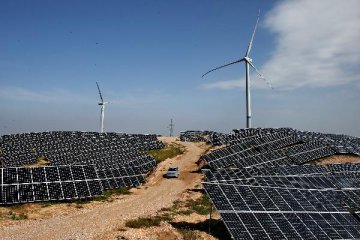
The latest inflation data released by National Bureau of Statistics yesterday shows that China’s consumer price index (CPI) rose 1.6 percent in September compared with a year earlier, down by 0.4 percent compared with last month, which has turned around to a downtrend for the first time since May of this year. China’s producer price index (PPI) that reflects price of industrial products fell 5.9 percent in September from a year earlier, matching the rate of decline in August, which has fallen for a 43rd straight month since March 2012 when PPI turned negative. Analysts believed that economic stabilization still needs the support from monetary policies, and expectd a great probability event of cut to the interest rate and reserve requirement ratio (RRR) in the fourth quarter.
In terms of CPI in September, food price rose by 2.7 percent, non-food price 1 percent, consumer price 1.4 percent and service price 2.1 percent. Meat is the core factor to influence the CPI growth. The data shows price of poultries and their products rose by 8.2 percent, causing an increase of 0.62 percentage points in CPI. (Pork price 17.4 percent, 0.53 percentage points in CPI).
Growth rate of CPI has increased all the way since May of this year, mainly due to growth of live pig price. Analyst of Beijing Orient Agribusiness Consultant Ltd, Ma Wenfeng, indicated that live pig price has declined since a half of month before, which is a trend according to Ma, as an increasing number of sows were kept to have more pigs. Therefore, it is also a trend for CPI to decline.
Previously, the market always worries about CPI growth. But now, downtrend occurs in both growth rates of CPI and PPI on the whole, after the live pig price begins to decline.
“Golden September and silver October” are busy seasons for traditional industries. PPI declined 0.4 percent in September compared with a month earlier, with rate of decline narrowed when compared with 0.8 percent in August, which is a normal status when considering the seasonal factor. Director of mysteel.com Xu Xiangchun analyzed that traditional industries are not that busy in autumn this year, as real estate investment is restricted; prices of various bulk commodities will continue to decline and it still requires more time to wait and see the economic stabilization. In terms of PPI in September, producer prices decreased by 0.6 percent compared with a month earlier.
Since March 2012, PPI turned negative as various industries have experienced deleveraging. In the recent two years, the contraction in demand in downstream industries started to affect upstream industry, result in mineral industry to record the worst price fall on the industry chain. Meanwhile, coal, oil, iron ore, non-ferrous metals and rare earth all suffered huge drop.
According to month-to-month data for Sept., prices of mineral, raw material and processing industry decreased by 21.2 percent, 11.4 percent and 4.8 percent, respectively. Mining companies, which were “gold-diggers”, are generally suffering losses now.
Fall in demand is the main factor result in weak performance of industrial products. Export has slowed down, with only two out of the previous nine months record positive growth rate. In terms of three major investment categories, investment in infrastructure rebound slightly, but the growth rate remains below 20 percent due to the insufficiency of capital resource; investments in real estate and manufacturing sustain the downward direction. Data from the National Bureau of Statistics shows that during the first eight months, site areas purchased by real estate developers decreased by 32.1 percent, coupled with a decline of 16.8 percent in floor areas of newly constructed buildings.
Guan Zhangjun, macro economy researcher at Morgan Stanley Huaxin Securities indicated that the economy went through bottoming process and started to stabilize in Q3, while demand is still weak. Policies previously issued aimed at stabilizing growth has yet to function on the economy. Economy growth remains weak though it is estimated to improve in Q4. Therefore, stable and consistent policies are required. In the short term, inflation is expected to stay at a low level by the end of the year, which ensures the possibility for slack policies to continue.
“As the upward trend of commodity price softens and downward pressure on the economy increases, deflation becomes a material risk on price. In other words, there is still room to ease the monetary policy. Interest rate and reserve requirement ratio cut is expected in the fourth quarter”, said Jiangchao, chief macroeconomic analyst of Haitong Securities Haitong Securities Company Limited(600837.SH).
Translated by Jelly Yi and Adam Zhang























Latest comments